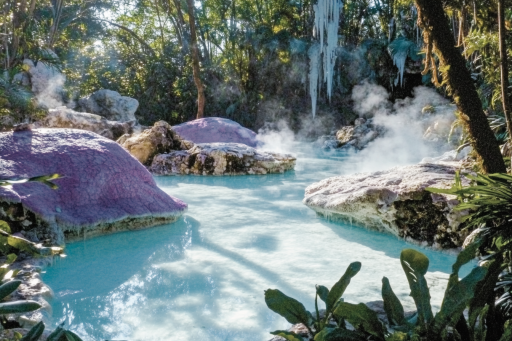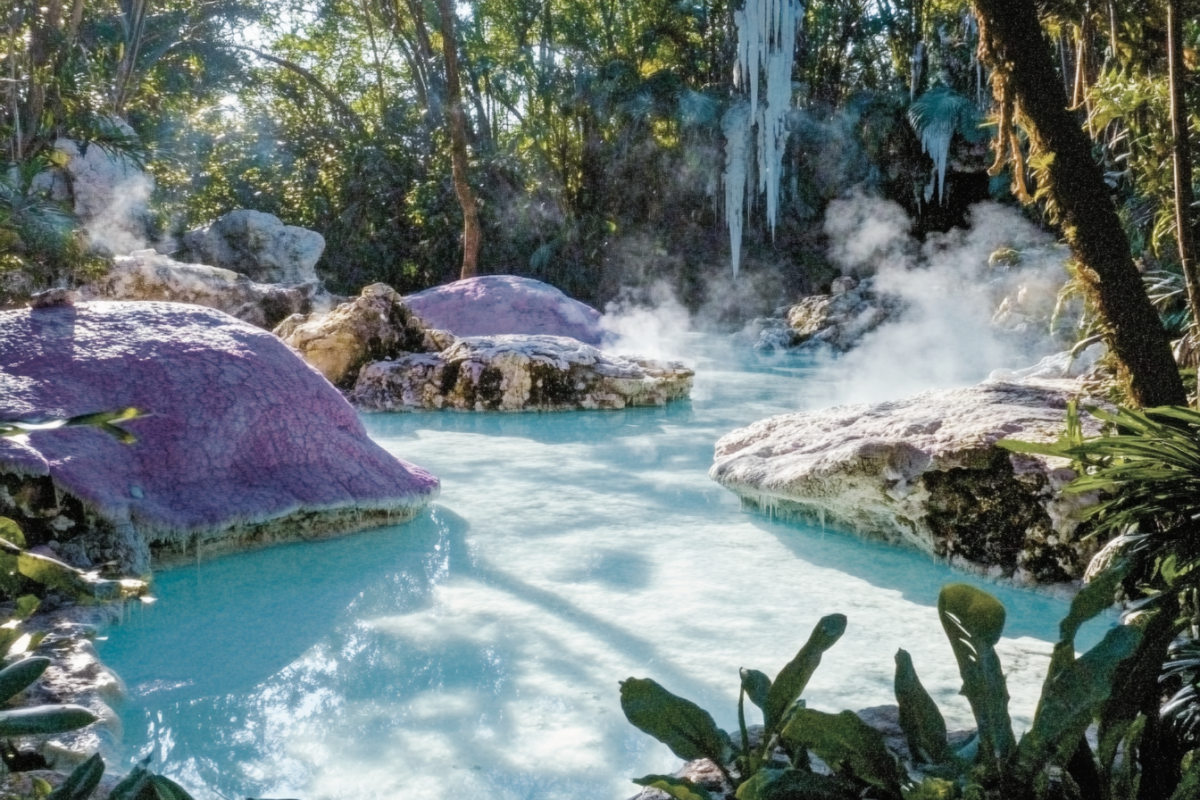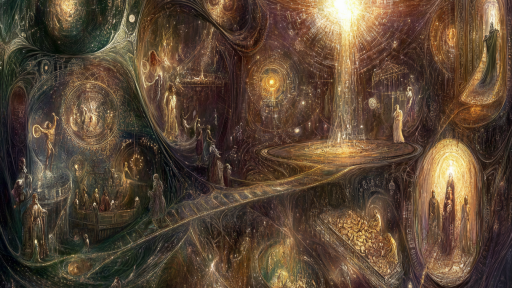
Most ecosystems follow predictable patterns of life, where species adapt to their surroundings in ways that make logical sense. But some environments defy all known rules of biology, supporting organisms in conditions that should be impossible. From toxic lakes teeming with life to forests growing in frozen wastelands, these ecosystems challenge everything we think we know about survival. Nature, it seems, is far stranger and more adaptable than we ever imagined.
The Boiling River of the Amazon – A Scalding Ecosystem

Deep in the Peruvian Amazon, a river so hot it boils flows for miles, creating an ecosystem unlike any other. Scientists were shocked to find life thriving in its near-scalding waters, where temperatures reach 200°F. Unique bacteria and heat-resistant fish have adapted to survive in conditions that should be lethal. This baffling ecosystem proves that life can endure even in places that seem utterly inhospitable.
Movile Cave – A Toxic, Oxygen-Starved World

Hidden beneath Romania, Movile Cave has been sealed off from the surface for over five million years, yet life inside has evolved without sunlight and with toxic air. The ecosystem relies entirely on chemosynthesis, where bacteria feed on sulfur instead of photosynthesis. Strange, sightless creatures—including scorpions, leeches, and centipedes—roam in the total darkness. This eerie underground world is like something from another planet.
The Lost City Hydrothermal Field – Towers of Life in the Deep

At the bottom of the Atlantic Ocean, towering white hydrothermal vents spew methane-rich fluids, forming an otherworldly ecosystem. Unlike traditional deep-sea vents, which rely on volcanic heat, the Lost City vents support unique microbes that produce energy without sunlight or traditional nutrients. These life forms could hold clues to how life might survive on other planets. Scientists believe this ecosystem may be one of the oldest on Earth.
The Forests of Mount Roraima – A Prehistoric Time Capsule

High above the Amazon rainforest, the tabletop mountain of Mount Roraima is home to an isolated ecosystem that has been cut off from the world for millions of years. Carnivorous plants, ancient ferns, and strange amphibians thrive in this mist-covered lost world. Many species found here exist nowhere else on Earth, evolving independently in their sky-high sanctuary. It’s a living relic of a time long before humans walked the planet.
Lake Natron – The Lake That Turns Animals to Stone

In Tanzania, a blood-red lake with highly alkaline waters preserves the bodies of animals that fall in, making them appear petrified. The lake’s extreme pH levels can burn skin, yet some hardy fish and algae thrive in its waters. Flamingos nest along its shores, seemingly immune to its deadly chemistry. This toxic yet life-filled lake is one of the strangest ecosystems on Earth.
The Underground Glaciers of Antarctica – Life in a Frozen Tomb

Beneath miles of Antarctic ice, hidden lakes and rivers flow in complete isolation, untouched by sunlight for thousands of years. Despite the extreme cold and lack of oxygen, microscopic life flourishes in these frozen depths. Scientists believe that if life can survive here, it could survive on icy moons like Europa. These underground ecosystems challenge the very definition of what it means to be alive.
The Darvaza Gas Crater – The “Door to Hell” That Never Stops Burning

In the deserts of Turkmenistan, a crater has been burning for over 50 years, creating a landscape of constant fire and toxic fumes. Despite the extreme conditions, bacteria have been discovered thriving in the scalding, methane-rich soil. Scientists study these microbes to understand how life might survive on fiery planets or moons. It’s a living example of nature adapting to the most unlikely of conditions.
Devil’s Kettle – A Waterfall That Swallows Everything

In Minnesota, a mysterious waterfall known as Devil’s Kettle pours half of its water into a deep hole—where it vanishes without a trace. Despite extensive studies, scientists have been unable to track where the water goes. The surrounding ecosystem thrives with plants and animals that seem completely unaffected by the phenomenon. This bizarre natural mystery remains unsolved.
The Black Smokers – Deep-Sea Vents That Shouldn’t Support Life

At the ocean’s deepest depths, hydrothermal vents called “black smokers” blast out superheated, mineral-rich water, creating towering structures that support thriving ecosystems. Giant tube worms, blind shrimp, and bizarre deep-sea crabs survive in complete darkness, using chemical energy rather than sunlight to live. These deep-sea ecosystems prove that life doesn’t need the sun to flourish.
The Tainted Waters of Pitch Lake – A Liquid Asphalt Habitat

In Trinidad, a massive lake of bubbling asphalt—Pitch Lake—somehow supports microbial life. Despite its toxic, sticky nature, bacteria thrive in its oily waters, feeding on the minerals within. Scientists study these microbes for clues about life’s ability to exist in extreme environments, including other planets. It’s one of the strangest natural laboratories on Earth.
The Floating Forests of the Sargasso Sea – A Sea Without Shores

Unlike any other ocean ecosystem, the Sargasso Sea has no land borders, yet it harbors a floating forest of seaweed teeming with unique marine life. Eels, fish, and sea turtles use it as a nursery, while drifting mats of golden algae provide shelter. This vast, self-sustaining ecosystem floats freely across the Atlantic, following the ocean’s currents.
The Amazon’s Boiling Acid Swamp – Nature’s Toxic Cauldron

Deep in the Amazon, patches of swampy water bubble with a mix of extreme heat and acid, creating an environment nearly uninhabitable for most life. Yet, specialized bacteria, amphibians, and even some fish have adapted to survive in these harsh pools. Scientists are still unraveling the chemical mysteries behind these natural cauldrons.
The Subterranean Ocean Beneath Earth’s Surface

Hidden deep within the Earth’s mantle, scientists have discovered an underground “ocean” trapped within minerals, holding more water than all surface oceans combined. While no life has been confirmed yet, this discovery challenges everything we thought we knew about Earth’s water cycle. If life is found here, it could mean that deep, hidden biospheres exist all over the planet—and beyond.
The Eternal Flame Falls – Fire and Water Coexisting

In a New York forest, a small waterfall hides something unusual—a natural gas leak beneath it keeps a flickering flame burning inside the cascading water. The flame remains lit, creating an eerie contrast between fire and water. The ecosystem around it has adapted to this unusual phenomenon, with moss and bacteria thriving in the gas-rich environment.
The Cave of Crystals – A Giant Underground Wonderland

Deep beneath the Chihuahuan Desert in Mexico lies the Cave of Crystals, home to some of the largest natural crystals ever discovered. These towering gypsum formations, some over 30 feet long, grow in an environment of extreme heat and humidity, where temperatures reach 136°F. Despite the inhospitable conditions, microbial life has been found trapped inside the crystals, possibly lying dormant for thousands of years. This bizarre ecosystem challenges what we know about life’s ability to survive in seemingly impossible places.
Nature’s Impossible Blueprints

Life has an uncanny way of adapting to places where it shouldn’t exist. These bizarre ecosystems push the boundaries of biology, proving that even in the most extreme conditions, nature finds a way. Could there be even stranger environments waiting to be discovered? If life can thrive in Earth’s most hostile places, who’s to say it can’t exist beyond our planet?





